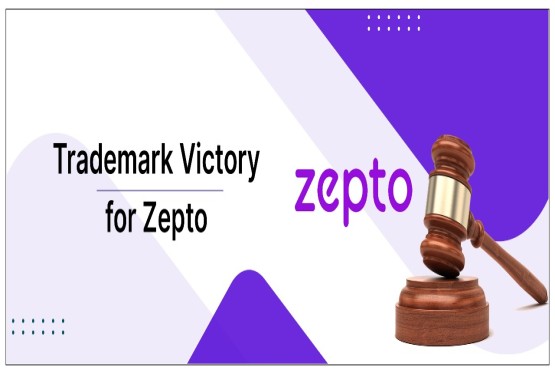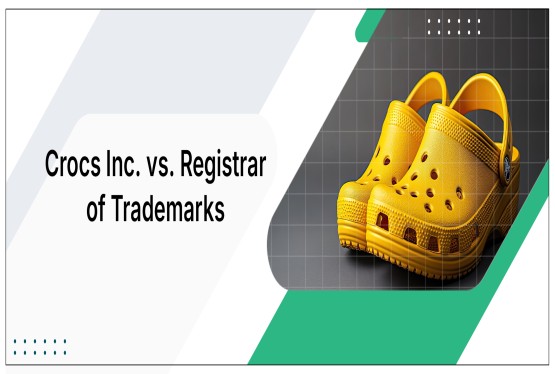Any organization is known by its name/ logo, which form the brand value and reputation of that organization. In order to ensure that no one uses your name, your reputation, you need to protect your brand by getting a trademark. One of the most common hurdle to your trademark registration is Objection under section 11(1) of the Trademarks Act, 1999 which deals with the Refusal of Trademark on Relative Grounds. In this article, we have made it easy for you to file Reply to Examination Report if you have received Objection under section 11(1).
You may be aware that the trademarks in India can be registered under the Trade Marks Act, 1999. Any person or organization seeking to register the trademark of their brand can apply themselves or with the help of a trademark attorney to the Registrar of Trademark. However; most founders forget after filing the trademark application and think that they will receive the Trademark Registration Certificate. It is important to note that there are various Stages of Trademark Registration, and the process usually takes approximately 18-24 months. If you surpass all the stages successfully, your trademark gets registered for the next 10 years from the date of TM Application.
It is our duty to remind you that registration of a trademark is not easy as it seems, as it is a lengthy process. Therefore, it is always advised to file your trademark application with the help of an attorney, you can contact firms dealing with trademark matters, like Compliance Calendar LLP for an easy and convenient process. This is because the Registrar may object to your trademark application on absolute and relative grounds.
The relative grounds for refusal of trademark registration in mentioned in Section 11 of Trade Marks Act, 1999. Moreover, Section 11 of the Act also talks about exceptions in case of refusal.
RELATIVE GROUNDS FOR REFUSAL OF TRADEMARK REGISTRATION
If you want to register your trademark you should be well aware of the examination process by the registrar and when your trademark can be objected on the relative grounds mentioned in the Trade Marks Act.
Section 11(1) of Trade Marks Act
Section 11(1) states that a trademark will not be valid for registration if:
- It portrays/ reflects some resemblance to any trademark registered earlier, providing identical goods and services.
- It is visually/phonetically similar to any trademark registered earlier, providing similar or identical services, which may confuse the customers and consumers.
In the case of FDC LIMITED v. NILRISE PHARMACEUTICALS PVT. LTD. AND ANR, 1963 AIR SC 449 the Hon’ble Supreme Court held that the overall structural and phonetic similarity of the two names "Amritdhara" and "Lakshmandhara" is likely to deceive or cause confusion to the public.
Section 11(2) of Trade Marks Act
Section 11(2) states that a trademark will be objected if:
-
It is identical or similar to a well- known trademark, and registering such trademarks will give it an unfair advantage.
-
It looks visually similar to or not of distinctive characteristics to a well- known trademark.
In case of In the case of Mankind Pharma Limited v. Arvind Kumar and Anr 2023 DHC 2700, the Court directed to remove the registered mark ‘Nikind’ for being identical and deceptively similar to ‘Nimekind’, a mark of Indian company Mankind Pharma Limited.
Section 11(3) of Trade Marks Act
Section 11(3) states that a trademark can be refused to register if it:
(a) is bound by the law of passing off to protect the unregistered trademarks.
(b) is bound by law of copyright
In the case of Honda Motors Co. Ltd V Charanjit Singh & Others 2003 PTC 261 the plaintiff was using the trademark "HONDA" for automobiles and related goods. However, the defendants started to use the mark "HONDA" for selling their pressure cookers. The Delhi High court decided that the use of the mark "Honda" by the defendant is not an honest adaptation, hence not valid.
However, it is important to note that Section 11(2) and 11(3) of Trade Marks Act, 1999 will only apply as grounds for refusal if the owner of the related well-known trademark objects the registration or application of subject trademark.
To protect yourself or your organization from lengthy and complicated processes and proceedings, it is always important to seek help from a specialized trademark attorney.
HOW TO PROTECT YOURSELF FROM THE RELATIVE GROUNDS OF REFUSAL?
-
In Parakh Vanijya Pvt. Ltd.v. Baroma Agro Product & Ors. 2018 AIR SC 3334 the Apex Court held that the Appellant has no right over the exclusive use of the word ‘MALABAR’. Further, the Apex Court also specifically held that on comparing the two label marks, the same appeared substantially different. The modified label of the Respondents consisting of the words “BAROMA”, “MALABAR”, “GOLD” had a different get-up from that of the Appellant.
-
In the case of Sun Pharma Laboratories Ltd. v. Intas Pharmaceuticals Ltd, 2020 SCC ONLINE DEL 59 the court finds that the appellant has failed to establish a prima facie case in its favor. The court considers the differences in the salient features between the two products and concludes that there is no likelihood of confusion or passing off.
-
In the case of Britannia Industries v. Cremica Agro Food Ltd. 2008 (38) PTC 89 (Del) the Delhi high court found that the word mark "Greetings" is a common dictionary word with no association to the goods in question, making it an arbitrary word mark for biscuits, cakes, and bakery products. The plaintiff has not provided sufficient evidence to establish distinctiveness and secondary meaning in relation to the mark. The trademark law should not be used to exclude an honest concurrent trader.
-
In the case of Phonepe Private Limited v. Ezy Services 2021 PTC 86 437 the court stated that the plaintiff cannot claim exclusivity solely over the Pe suffix, as no infringement can be claimed on the basis of part of a registered trademark. By misspelling Pay as Pe, the legal position cannot change. No prima facie case of passing off can, therefore, be said to exist, even on this ground.
THE RULE OF ANTI – DISSECTION
The rule of anti- dissection mandates that the Courts whilst dealing with cases of trademark/device infringement involving composite mark/devices, must consider the composite mark in their entirety as an indivisible whole rather than truncating or dissecting them into its component parts and make comparison with the corresponding parts of arrival mark/device to determine the likelihood of confusion. The raison d'être underscoring the said principle is that the commercial impression of a composite trademark/device on an ordinary prospective buyer is created by the mark/device as a whole and not by its component parts.
In the case of Ultratech Cement Limited and Other vs. Dalmia Cement Bharat Limited 2016 BOM CR 5 100 – The court concluded that the registration of the Plaintiff’s UltraTech trademarks was made on the exclusive notion that the word “Ultra “was merely a component of the entire combination and the trademarks ought to be considered as a whole and not in parts.
HOW TO FILE REPLY TO EXAMINATION REPORT?
Filing reply to Examination Report (MIS-R) is a very crucial step while filing trademark in India and it is always advisable to seek help of a specialized trademark attorneys or a trademark advocate, because not filing the reply to an examination report or opposition can lead to Abandonment of your trademark application. If the registrar of trademark files an objection on your trademark application in examination report, you can always file reply to examination report within one month.
While filing a reply to an examination report one must showcase their mark as distinctive from the cited mark (mark which is said to be similar to your mark). Moreover, one must be able to prove that their mark is distinct from marks of other people offering same goods and services.
But the process to register your trademark does not end if it is accepted by the trademark registry. As per Section 21 of the Trade Mark Act, 1999 once your trademark is Accepted & Advertised, time period of four months is given to any third party to file an Opposition (TM-O), stating that the applied mark is similar to another mark. After an opposition is filed, the applicant of the advertised trademark should file a counter-statement within 2 months. The Applicant should also attach the copy of Rule 46 affidavit. It is like official proof that all the facts and evidence presented in the counter statement is legitimate and valid. Hence, filing a reply to trademark examination report or opposition is not just a procedure but a strategic step which can further lead to TM Registration of your trademark.
CONCLUDING REMARKS
The registration of trademark is a very crucial step to uplift your brand and business. However, there are various grounds and situations in which your trademark can be refused. Section 11 describes the relative grounds on which the applied mark can be refused, so, it is important to check all the grounds before filing trademark application for your mark. If you want to file reply to trademark objection, contact Compliance Calendar LLP today, for assistance and we would be glad to help you. Reach out to us at info@ccoffice.in or connect at 9988424211






























_(b)_of_the_Trademark_Act,_1999_(1)_crop10_thumb.jpg)



_crop10_thumb.jpg)



























_crop10_thumb.jpg)
_crop10_thumb.jpg)






_crop10_thumb.jpg)








_crop10_thumb.jpg)
_crop10_thumb.jpg)



_crop10_thumb.jpg)





























_crop10_thumb.jpg)

















_crop10_thumb.jpg)






_crop10_thumb.jpg)












































































































































_crop10_thumb.jpg)




































_crop10_thumb.jpg)












_crop10_thumb.jpg)






















